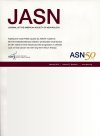Impaired Glucose Metabolism, Primary Cilium Defects, and Kidney Cystogenesis in Glycogen Storage Disease Type Ia
Metabolism adaptations due to glucose-6 phosphate accumulation in glycogen storage disease type Ia kidneys, toward a Warburg-like metabolism, promoted cell proliferation.Metabolic perturbations directly affected primary cilium structure and cystogenesis in glycogen storage disease type Ia kidneys.
Background
Glycogen storage disease type Ia (GSDIa) is a rare metabolic disorder caused by mutations in the catalytic subunit of glucose-6 phosphatase (G6PC1). This leads to severe hypoglycemia, and most young patients with GSDIa develop CKD. The kidney pathology is characterized by the development of cysts, which typically occur at an advanced stage of CKD.
Methods
To elucidate the molecular mechanisms responsible for cyst formation, we characterized renal metabolism, molecular pathways involved in cell proliferation, and primary cilium integrity using mice in which G6pc1 was specifically deleted in the kidney from an in utero stage.
Results
GSDIa mice exhibited kidney fibrosis, high inflammation, and cyst formation, leading to kidney dysfunction. In addition, the loss of G6PC1 led to the ectopic accumulation of glycogen and lipids in the kidneys and a metabolic shift toward a Warburg-like metabolism. This metabolic adaptation was due to an excess of glucose-6 phosphate, which supports cell proliferation, driven by the mitogen-activated protein kinase/extracellular signal–regulated kinases and protein kinase B/mammalian target of rapamycin pathways. Treatment of GSDIa mice with rapamycin, a target of the mammalian target of rapamycin pathway, reduced cell proliferation and kidney damage. Our results also identified lipocalin 2 as a contributor to renal inflammation and an early biomarker of CKD progression in GSDIa mice. Its inactivation partially prevented kidney lesions in GSDIa. Importantly, primary cilium defects were observed in the kidneys of GSDIa mice.
Conclusions
Metabolic adaptations because of glucose-6 phosphate accumulation in GSDIa renal tubules, toward a Warburg-like metabolism, promoted cell proliferation and cyst formation in a similar manner to that observed in various cystic kidney diseases. This was associated with downregulation of primary cilium gene expression and, consequently, altered cilium morphology.




